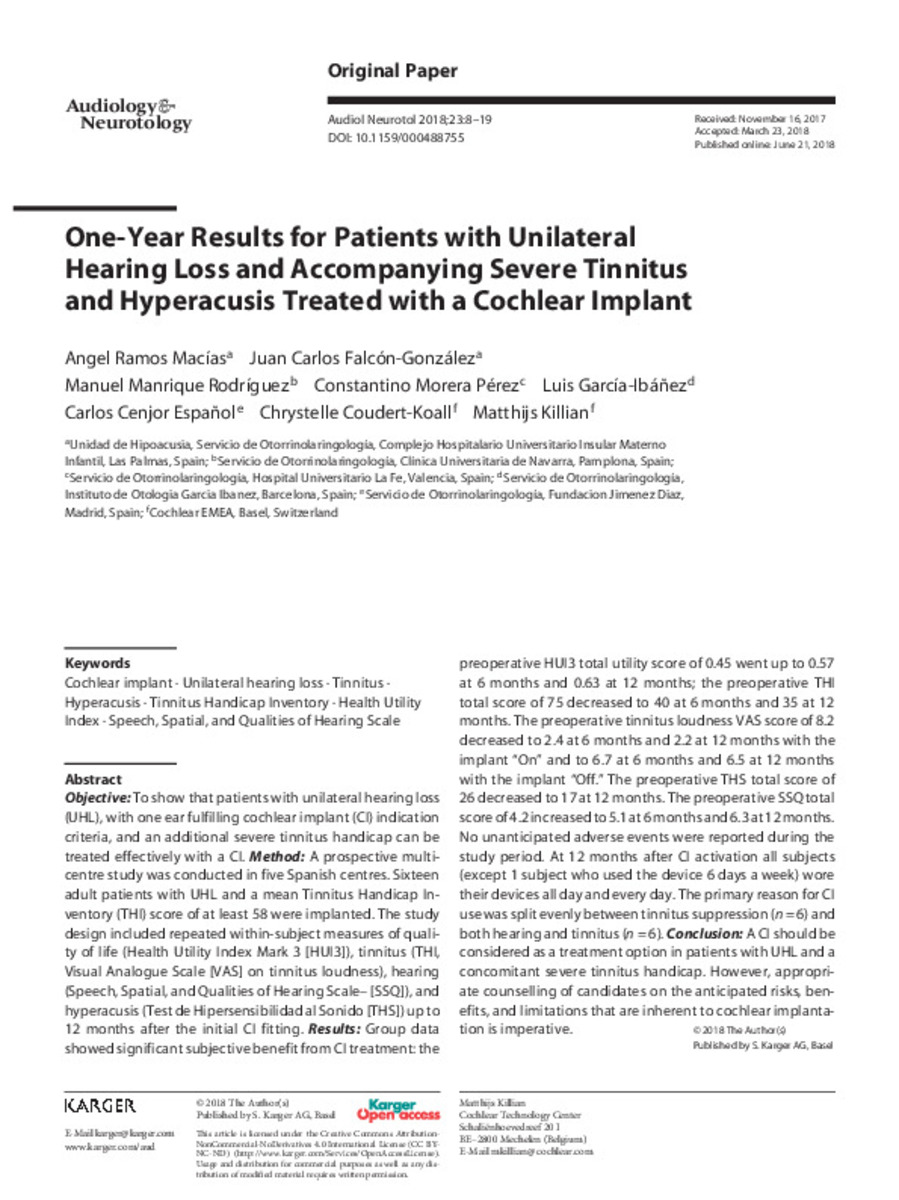One year results for patients with unilateral hearing loss and accompanying severe tinnitus and hyperacusis treated with a cochlear implant
Keywords:
Cochlear implant
Unilateral hearing loss
Tinnitus
Hyperacusis
Tinnitus handicap inventory
Health utility index
Speech, spatial, and qualities of hearing scale
Note:
This article is licensed under the Creative Commons AttributionNonCommercial-NoDerivatives 4.0 International License (CC BYNC-ND) (http://www.karger.com/Services/OpenAccessLicense).
Usage and distribution for commercial purposes as well as any distribution of modified material requires written permission.
Citation:
Ramos-Macías, A. (Angel); Falcón-González, J.C. (Juan Carlos); Manrique, M. (Manuel); et al. "One year results for patients with unilateral hearing loss and accompanying severe tinnitus and hyperacusis treated with a cochlear implant". Audiology and neuro-otology. 23 (1), 2018, 8 - 19
Statistics and impact
0 citas en

Items in Dadun are protected by copyright, with all rights reserved, unless otherwise indicated.







